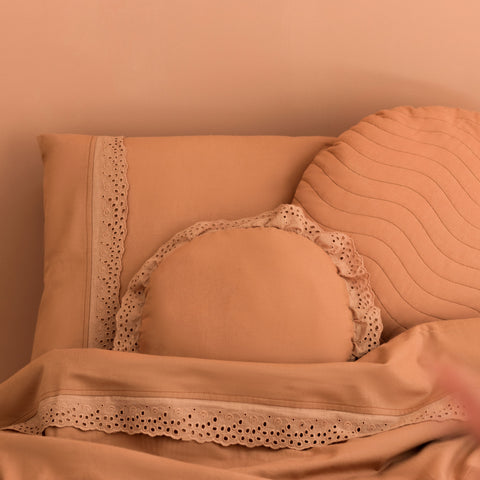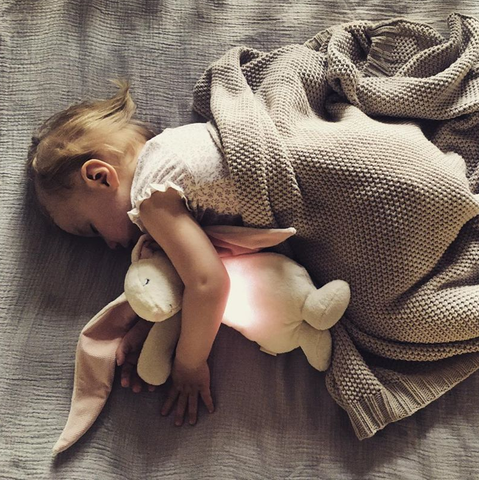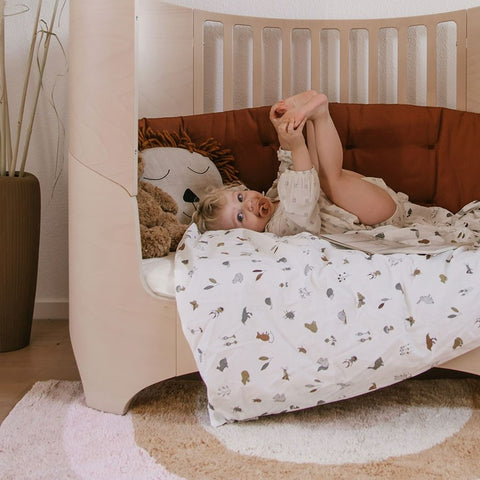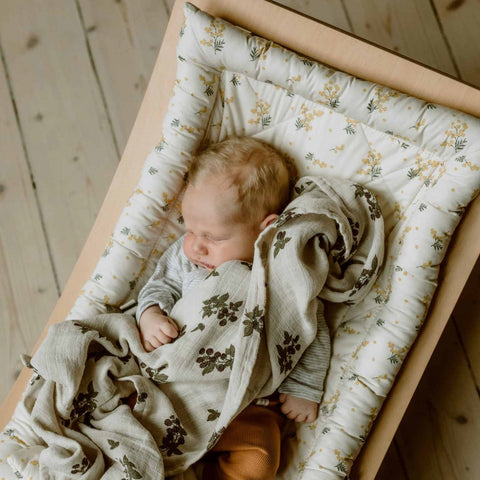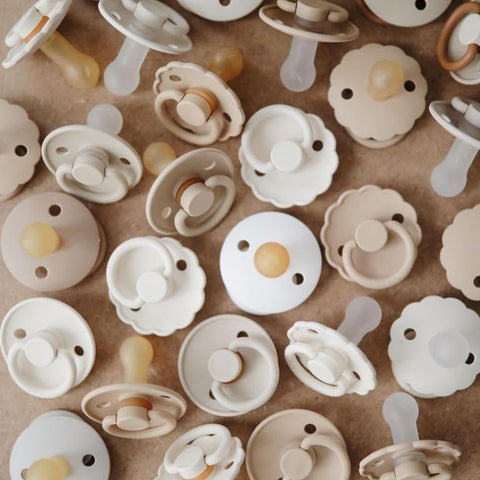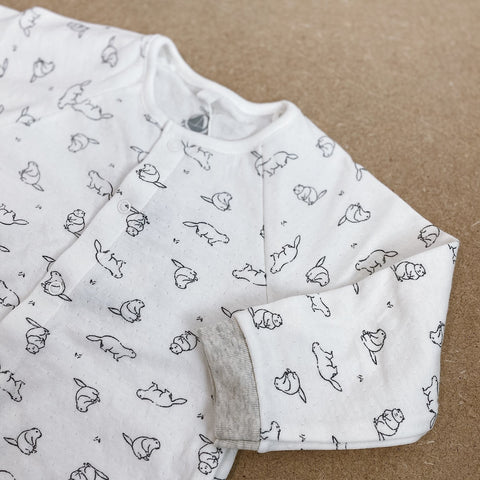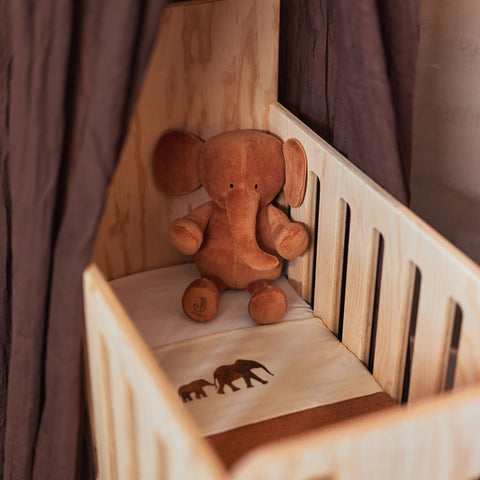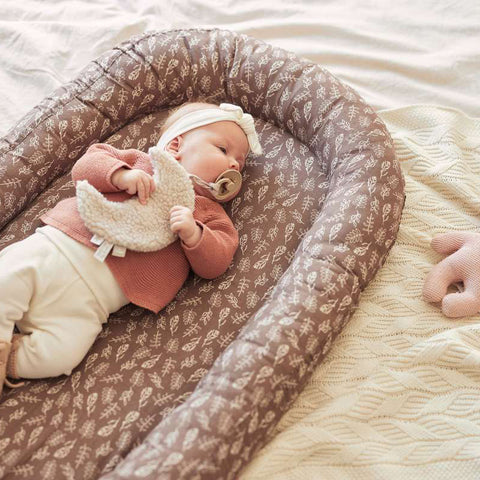
Guest blog by Lise Dullaerts, the Baby Sleep Coach:
I often get the question; “how do you get a good sleeper?” And if only the answer was as simple as the question… There is not one thing you can do that guarantees a good sleep. However, there are certainly some things you can do, so that you increase the chance of a good sleeper!
Let's start at the beginning for this: what is a good sleeper?
That is different for every parent! A good sleeper as we know them from the 'books' and as is often said, are little ones who follow nicely in the standard schedules and sleep through the night from 2-3 weeks, never wake up or have problems, are always happy, never sometimes cry when going to sleep, always wake up smiling,… When you read this summary you quickly think, ok this is absurd!
And that is it! Only 25% of all children sleep through at 3-4 months, 25% have never slept through by the age of 2 years.
In addition, one family finds getting up once a night a disaster and the other family finds comforting for an hour 3 times a night just fine. So there is no such thing as a standard good sleeper! There is only a good or bad sleeper according to your ideas and expectations and they do not have to live up to what is 'said' at all.
Is there really nothing you can do to improve your sleep?
Of course it is! It is important to know that sleep is a biological fact and does not just happen naturally. What does this mean? All children receive everything they need to sleep at birth.
However learning how to effectively use all of these necessities to get to sleep? Is something they should learn from you as a parent. You certainly don't have to be a rocket scientist to help your little one in this process, below you will find some interesting facts and tips!
Step 1: Prevent fatigue!
Make sure your little one doesn't go past his wake time, otherwise your little one will get overtired. This quickly leads to overstimulation and difficulty in sleeping. If your little one did fall asleep, we often see short naps because overtired children have a hard time making the transition from light to deep sleep and certainly cannot switch two sleep cycles together. So pay close attention to your little one's sleep signals to find the right bedtime.
Step 2: Sleep ritual
Try to use a short sleep ritual before each nap. Your little one can't read the clock, however based on your actions, he can know what is coming. If you apply the same ritual with every nap, your little one will surrender to sleep much more easily.
Step 3: Sleeping environment
Try to put your little one to sleep in the same environment every time. Like the ritual, consistently providing a sleeping environment will also help your little one surrender to sleep. This can be: the co-sleeper, the cot/baby bed, the crib, toddler bed,...
White noise is always part of the sleeping environment for me. This could be done in all possible forms, find one here that works for your little one. I remain in favor of devices that can play the entire nap.
White noise, filters out ambient noise and once again provides a landmark for your little one. A good dark room is also a real must from about 6-12 weeks. Melatonin, the sleep hormone, is only released in the dark and for this reason sleeping in a clear room will be very difficult for many kids.
Step 4: Sleep Associations
What are Sleep Associations? These are cues, materials or behaviours that your little one associates so strongly with going to sleep that he can't live without. The way children are put to sleep at the start of a nap or before going into the night is the only way they know how to sleep. If they wake up at the end of a sleep cycle and that same sleep association isn't there, then they can't find the sleep itself.
For this reason, it is important to divide the sleep associations into two groups: Parent- and child-assisted sleep associations.
Among the parent-assisted associations you will find, carrying, co-sleeping, walking around, rocking, feeding to sleeping,… These are in no way wrong! They just demand a lot of energy from the parent. If your little one falls asleep on the arm, and keeps waking up when put to bed, this is just normal.
Within the child-assisted associations you will find, a cuddle cloth, bed bumpers, sleeping nest, the white noise sound, swaddle cloth / sleeping bag, ...
These are things that your little one can always keep with him or have around him, so that he can find sleep on his own, without the help of mom and/or dad.
A young child will always first need a combination of both forms of sleep associations in order to find sleep. After 4-6 months it usually starts to become possible as a parent to help less and less and to let your little one find its own way. This is of course still under supervision and guidance if necessary.
Crying is your little one's language and the most important form of communication. There is a good chance that your little one will cry before going to sleep, first of all to get rid of the stimuli of the day and because he knows that sleeping involves a form of separation.
No matter how much you love your little one, you can never take all the stress away. An important function of crying is therefore to release tension and promote recovery. Letting your little one cry quietly in your arms to de-stimulate is therefore the best approach, this is called discharge crying.
Your job here is not to stop your baby's crying or shorten the crying period. Crying is often what children need to release the tension of the day, once they are done crying they can surrender to sleep. Don't assume that your baby will always need you physically when he starts to cry, not every child likes to be held or carried while crying.
Making your presence felt can also be done in other ways; by talking or singing to your little one, wrapping your baby in a T-shirt or cloth that you have worn, you can also put a cuddle cloth with your scent next to your little one, touch your baby while he is in his bed/park lies,...
Use all of your little one's senses to let him feel that you are still with him, also you don't always have him on the arm or chest. Also, don't assume that you're doing something wrong or that you need to adjust your approach because your little one will continue to cry even though you're comforting him. Maybe your baby just hasn't cried yet.
It is therefore important to comfort your little one in a calm and consistent way. Very often we offer 1001 different things to help a little one fall asleep, and this can just increase the stress and tension!
How do you take it easy then? Sit next to your little one's bed, take him in your arm and let him cry with you. In the meantime, you can rock gently, say you understand, or gently hug or hum.
Once the crying subsides and your little one calms down, you can put him to bed and continue to comfort him there until he can find sleep. Does your little one get more upset when comforting and crying on the arm?
Then you can choose to put him in his bed already, or next to you on the large bed, to give him his space. In the meantime, you will remain present, you may comfort him by touching or soothing him, if your little one allows this. The calmer you are when comforting, the better the comforting often goes.
I apply these 5 steps every time, with every child, regardless of age or the sleeping problem. What is important, to make these steps your own! That is exactly where the art of sleep counseling lies!
The basics are the same for every child, and even every adult, however how you apply it for your little one, and yourself, is different for everyone! I hope these tips get you on the right track.
Doesn't it work? Or do you need more explanation? Then you can get started with the online sleep programs or you are always free to contact us for a guidance program or just a short question time!
Sleep well!
Lise (The Baby sleep coach)
Do you need more information about Lise's trajectories and programs? Click here. You can also find Lise on Instagram.
